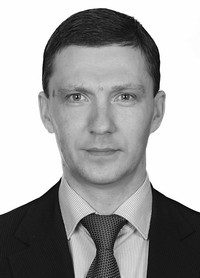MANIFESTATION OF RESPIRATORY FUNCTIONS OF HOCKEY PLAYERS UNDER TRAINING IMPACTS OF DIFFERENT DIRECTIONS
Keywords:
respiratory functions, hockey players, metabolism, load intensity.Abstract
Objective of the study was to identify the features of the reaction of the respiratory system of hockey players to a special physical load.
Methods and structure of the study. The survey involved 25 qualified hockey players of various types of energy metabolism at the age of 16-18 years. On the basis of indicators of the response of the respiratory system of athletes to loads of varying intensity, additional reserves for increasing fitness were studied.
Results and conclusions. The gradation of the reactivity of the respiratory system of hockey players, depending on the parametric algorithmization of the load, makes it possible to stimulate the deployment of additional reserves to increase fitness. Variation of non-specific load parameters is expedient in order to activate recovery based on a combination of aerobic and anaerobic mechanisms of energy metabolism of qualified hockey players.
References
Bolotin A.E., Bakaev V.V., Van Zvieten K.Ya. et al. Differentsirovannaya podgotovka plovtsov-marafontsev k sorevnovaniyam na otkrytoy vode s uchetom tipov energeticheskogo metabolizma [Differentiated training of marathon swimmers for competitions in open water, taking into account the types of energy metabolism]. Teoriya i praktika fizicheskoy kultury. 2020. No. 10. pp. 37-39.
Bolotin A.E., Ponimasov O.E., Aganov S.S. et al. Selektivnost vosproizvedeniya obraznykh predstavleniy v trenirovochnom protsesse legkoatletov-studentov [Selectivity of reproduction of figurative representations in the training process of student athletes]. Teoriya i praktika fizicheskoy kultury. 2022. No. 1. pp. 51-53.
Zyukin A.V., Ponimasov O.E., Bolotin A.E. et al. Kontrol perifericheskoy gemodinamiki plovtsov kategorii «Masters» [Control of peripheral hemodynamics in swimmers of the “Masters” category]. Teoriya i praktika fizicheskoy kultury. 2020. No. 12. pp. 67-69.
Ponimasov O.E., Romanenko N.V., Barchenko S.A. et al. Sensomotornaya integratsiya v sovershenstvovanii slozhnykh igrovykh koordinatsiy khokkeistov [Sensorimotor integration in improving the complex game coordination of hockey players]. Teoriya i praktika fizicheskoy kultury. 2022. No. 2. pp. 97-99.
Ponimasov O.E., Pugachev I.Yu., Paramzin V.B. et al. Kinematicheskiy analiz tekhniki plavaniya na osnove sinkhronnoy videozapisi lineynogo dvizheniya [Kinematic analysis of swimming technique based on synchronous video recording of linear motion]. Teoriya i praktika fizicheskoy kultury. 2023. No. 1. pp. 14-16.
Pugachev I.Yu., Paramzin V.B., Raznovskaya S.V. et al. Formirovaniye ustoychivosti polozheniya dlya strelby v sluzhebnom dvoyeborye [Formation of position stability for shooting in service biathlon]. Teoriya i praktika fizicheskoy kultury. 2022. No. 6. pp. 49-51.
Shtamburg I.N., Ponimasov O.E., Grachev K.A. et al. Ekonomizatsiya tipologicheskikh kombinatsiy tekhniki prikladnogo plavaniya pri obuchenii kursantov voyennykh vuzov [Economization of typological combinations of applied swimming technique in teaching cadets of military universities]. Teoriya i praktika fizicheskoy kultury. 2016. No. 2. pp. 16-17.

Additional Files
Published
Versions
- 28-04-2023 (4)
- 27-04-2023 (3)
- 23-04-2023 (2)
- 17-04-2023 (1)

